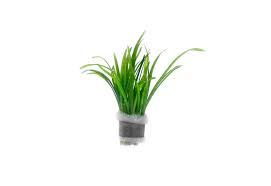1
/
of
1
Midwest Aquarium and Pond Supplier LLC
(156) sagitaria sabukata
(156) sagitaria sabukata
Regular price
$10.00 USD
Regular price
Sale price
$10.00 USD
Shipping calculated at checkout.
Quantity
Couldn't load pickup availability
The term "Sagitaria sabukata" is a common misspelling of Sagittaria subulata, a popular and easy-to-care-for aquatic plant also known as Dwarf Sagittaria. It is a versatile plant that can be used for foreground, midground, or even background aquascaping, depending on the tank size and light intensity.
Appearance
- Leaves: Sagittaria subulata has thin, grass-like leaves that grow in a rosette pattern.
- Size: In high light, it remains relatively short, forming a lush, green carpet. In lower light, it can grow taller and reach toward the water's surface, acting as a background plant.
- Growth: It spreads through runners, creating a dense, carpet-like effect over time.
Care guidelines
Dwarf Sagittaria is a hardy, beginner-friendly plant that can adapt to a wide range of water conditions.
- Lighting: It thrives in medium light but can tolerate both low and high light. Be aware that very high light for extended periods can cause the leaves to turn yellow or melt.
- Substrate: As a root feeder, it benefits from a nutrient-rich substrate or the addition of root tabs, especially in inert substrates like sand or gravel.
- CO2: While not required, CO2 injection will promote faster and more robust growth.
- Water parameters: It is very adaptable and can thrive in soft, medium, or hard water. The recommended temperature is 68–82°F (20–28°C), and it can tolerate a wide pH range (6.0–8.0).
- Placement: It works well as a foreground plant to create a carpeting effect or as a midground to background plant when allowed to grow taller.
Propagation and maintenance
- Propagation: Dwarf Sagittaria readily propagates itself by sending out runners that grow new plantlets. These can be separated and replanted or simply left to spread and form a thicker carpet.
- Maintenance: Regular trimming is not typically necessary, but you can trim older, damaged leaves at the base to maintain a tidier appearance.
Share
No reviews

